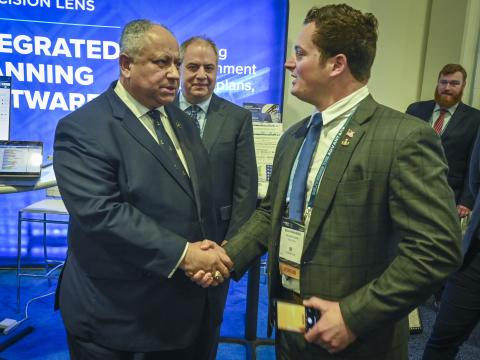Department of Homeland Security Interested in Machine Learning Technologies
The Department of Homeland Security (DHS) is evaluating machine learning technologies but may be ill prepared right now to adopt them, said Stephen Dennis, program manager within the Science and Technology Directorate, DHS. Dennis made the comments while participating in a panel discussion on the role of laboratories in homeland security.
The Department of Homeland Security (DHS) is evaluating machine learning technologies but may be ill prepared right now to adopt them, said Stephen Dennis, program manager within the Science and Technology Directorate, DHS. Dennis made the comments while participating in a panel discussion on the role of laboratories in homeland security at the AFCEA Homeland Security Conference in Washington, D.C.
Dennis reported that the department has analyzed its big data needs and identified 45 challenges. The department has turned to laboratories to resolve some of the issues it faces, including the need to protect data and limit access to it, moving data and analyzing cybersecurity data. Machine learning is one area of interest within the department. "I think DHS could make use of it, but it's an area where DHS is least prepared to make use of it," Dennis said. The Pacific Northwest National Laboratory is working with the DHS, providing open source machine learning solutions that the department may be able to adopt, he reported.
His colleague, Timothy Burke, a program manager with the DHS Office of National Laboratories, discussed the five labs within the DHS and the roles they play. The labs include the National Biodefense Analysis and Countermeasures Center, the Plum Island Animal Disease Center, the National Bio and Agro-Defense Facility, the Chemical Security Analysis Center and the Transportation Security Laboratory.
Andy Stadnik, associate executive director for laboratory sciences, Consumer Product Safety Commission, outlined his agency's role in keeping the public safe from defective products. The commission receives daily emergency room reports from across the nation, and laboratory scientists and engineers study a variety of issues, including nail gun injuries and toaster oven fires.
At one point, Stadnick said, toaster ovens were losing market share to microwave ovens, so manufacturers opted to install touch pads and clocks on toaster ovens to make them look more like microwaves. Unfortunately, toaster ovens are not supposed to be plugged in 24 hours a day, but that is exactly what consumers did once the ovens included clocks. The result was a rash of kitchen fires. Nail guns, on the other hand, were once limited to commercial construction business but in recent years have been sold to individual consumers who "did not understand that these things shoot nails at a fairly high velocity," Stadnick deadpanned. That led to people showing up in emergency with nails in their skulls, "because Dad was putting up drywall in the next room," he reported.



